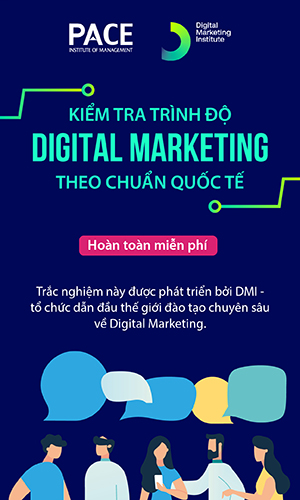
5 THÁCH THỨC CỦA DIGITAL MARKETING MÀ MỌI MARKETER NÊN BIẾT
Bối cảnh thị trường Marketing đang thay đổi nhanh chóng và những yếu tố mới đang định hình lại cách thức chúng ta tương tác và thu hút khách hàng mục tiêu. Bài viết này sẽ đi sâu phân tích từng xu hướng, dựa trên các số liệu thực tế và cung cấp những bài học thiết thực giúp bạn điều chỉnh chiến lược tiếp thị để duy trì lợi thế cạnh tranh trong môi trường biến động hiện nay.
Sự suy giảm khả năng thu thập và phân tích dữ liệu hành vi người dùng
Trước đây, công nghệ Marketing từng được kỳ vọng sẽ mang lại cái nhìn toàn diện về hành trình khách hàng, từ giai đoạn nhận diện thương hiệu cho đến khi đưa ra quyết định mua hàng. Tuy nhiên, những thay đổi về quyền riêng tư và bảo vệ dữ liệu đang làm mờ đi bức tranh này. Các quy định bảo mật dữ liệu ngày càng nghiêm ngặt như GDPR (Châu Âu) và CCPA (California), cùng với sự gia tăng của các trình chặn quảng cáo và việc hạn chế sử dụng cookie của bên thứ ba, đã khiến khả năng theo dõi hành vi người dùng trở nên phức tạp hơn. Thêm vào đó, sự phân mảnh của hệ sinh thái Digital khi người dùng truy cập thông qua nhiều thiết bị và nền tảng khác nhau càng làm trầm trọng thêm tình trạng thiếu hụt dữ liệu.
Sự suy giảm trong khả năng thu thập và phân tích dữ liệu hành vi người dùng đã tạo ra hàng loạt thách thức mới cho các Marketer. Việc đo lường hiệu quả và tính toán ROI của các chiến dịch Marketing, từ quảng cáo trả phí đến SEO và các hoạt động nội dung, trở nên khó khăn hơn. Điều này không chỉ ảnh hưởng đến việc tối ưu hóa chiến dịch mà còn khiến việc xây dựng báo cáo và biện minh cho ngân sách trở nên phức tạp.
Hơn nữa, sự thống trị của Google với tính năng "tìm kiếm không nhấp chuột" (zero-click search) đang trở thành một thách thức lớn. Người dùng hiện có thể tìm thấy câu trả lời ngay trên trang kết quả tìm kiếm mà không cần truy cập vào trang web, điều này làm giảm lưu lượng truy cập tự nhiên (organic traffic) cho các doanh nghiệp. Tại các thị trường lớn như EU và Mỹ, xu hướng này ngày càng phổ biến, buộc các Marketer phải điều chỉnh chiến lược để tiếp cận khách hàng một cách trực tiếp và hiệu quả hơn trong môi trường Digital đang thay đổi nhanh chóng.
Để thích ứng, các Marketer chuyển hướng sang những cách tiếp cận mới như tập trung vào xây dựng dữ liệu bên thứ nhất (first-party data), cá nhân hóa trải nghiệm người dùng và sử dụng các công cụ phân tích hành vi trực tiếp trên nền tảng của mình. Chỉ khi làm chủ được những thay đổi này, các doanh nghiệp mới có thể duy trì lợi thế cạnh tranh trong thời đại Marketing hậu cookie.
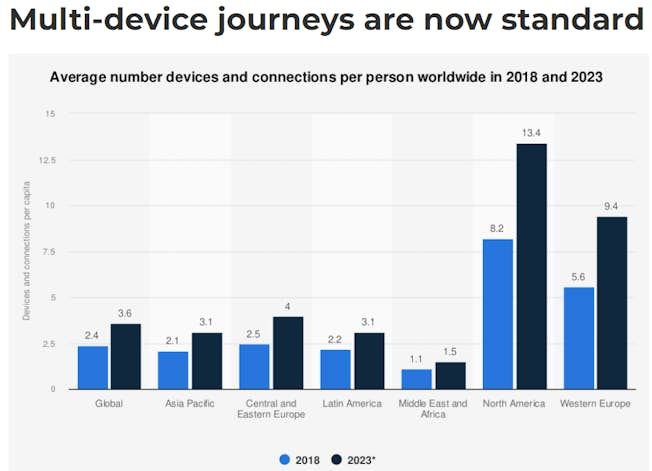
Các nền tảng quảng cáo lớn như Meta và Google đang để các nhà quảng cáo đối mặt với rủi ro tài chính đáng kể. Họ không cung cấp thông báo kịp thời về các khoản phí quá mức hoặc nhấp chuột gian lận, buộc các doanh nghiệp phải tự mình kiểm tra và theo dõi thường xuyên. Điều này dẫn đến tình trạng lãng phí ngân sách quảng cáo và tạo gánh nặng cho các doanh nghiệp, buộc họ phải thuê thêm nhân sự hoặc hợp tác với các agency để đảm bảo hiệu quả của chiến dịch.
Những điểm chính rút ra
Môi trường Digital Marketing ngày càng trở nên phức tạp, đi kèm với nhiều rủi ro tiềm ẩn. Việc theo dõi và đo lường hiệu quả ngày càng khó khăn, đồng thời làm gia tăng nguy cơ gian lận nhấp chuột và lãng phí ngân sách. Để chủ động bảo vệ quyền lợi của mình, các doanh nghiệp cần:
- Xây dựng và thử nghiệm các mô hình đo lường hiệu quả (attribution models) riêng: Việc này sẽ giúp doanh nghiệp có cái nhìn sâu hơn về hiệu quả chiến dịch và phát hiện sớm những biến động bất thường.
- Thường xuyên rà soát và gửi khiếu nại: Dành thời gian kiểm tra chi tiết các báo cáo quảng cáo và gửi yêu cầu xác minh nếu phát hiện có dấu hiệu click ảo hoặc chi phí vượt mức.
- Thích ứng với thay đổi trong chính sách cookie: Đặc biệt là sau những cập nhật từ Apple với tính năng App Tracking Transparency, khiến chi phí quảng cáo có thể tăng cao và giảm hiệu quả. Doanh nghiệp cần sẵn sàng điều chỉnh chiến lược để ứng phó với những thay đổi này.
Sự gia tăng của Dark Traffic
Các công cụ phân tích hiện nay thường quy các lượt truy cập từ những kênh này vào mục “truy cập trực tiếp” hoặc “tìm kiếm tự nhiên”, khiến doanh nghiệp khó đánh giá đúng hiệu quả của từng kênh. Điều này giống như việc cố ghép một bức tranh mà thiếu đi những mảnh ghép quan trọng.
Ví dụ, nghiên cứu của SparkToro cho thấy phần lớn lưu lượng truy cập vào trang web của họ đến từ các nguồn không xác định rõ. Điều này đồng nghĩa với việc các doanh nghiệp đang bỏ lỡ cơ hội nắm bắt hành vi khách hàng và chưa tối ưu được chiến lược Marketing của mình một cách toàn diện.
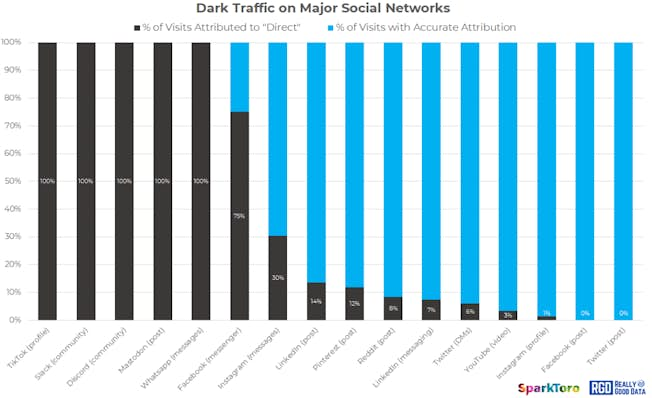
Những điểm chính rút ra
- Bỏ qua các kênh mạng xã hội chỉ vì không thể đo lường hiệu quả chuyển đổi trực tiếp đồng nghĩa với việc bạn đang lãng phí nhiều cơ hội tiếp cận khách hàng tiềm năng. Các đội ngũ Marketing thành công thường tập trung vào việc tối ưu hóa độ phủ và đánh giá hiệu suất tổng thể của chiến dịch, thay vì chỉ dựa vào các chỉ số chuyển đổi trực tiếp (direct conversion metrics).
- Để đánh giá hiệu quả của các kênh như tìm kiếm và mạng xã hội, hãy ưu tiên theo dõi các chỉ số như Reach, Engagement và Brand Awareness. Mặc dù không thể phân tích chi tiết từng nguồn truy cập, nhưng những chỉ số định hướng (vanity metrics) này sẽ giúp bạn so sánh mức độ hiệu quả giữa các kênh khác nhau.
- Đầu tư vào các kênh khó đo lường không có nghĩa là đang "đánh cược" mà không có dữ liệu. Bạn hoàn toàn có thể thiết lập các hệ thống đo lường độc lập (custom tracking systems) như theo dõi sự thay đổi về vị trí địa lý (geolocation tracking) hoặc theo dõi xu hướng biến động theo thời gian (trend analysis) để đánh giá tác động của từng kênh.
Sự ảo tưởng về khả năng đo lường hiệu quả Marketing (Attribution Marketing)
Chúng ta đã chứng kiến nhiều doanh nghiệp lớn như Airbnb cắt giảm đáng kể, thậm chí ngừng hẳn ngân sách quảng cáo mà không làm giảm doanh số. Điều này đặt ra câu hỏi về hiệu quả thực sự của quảng cáo truyền thống và liệu các chiến dịch Marketing có thực sự được đánh giá đúng với đóng góp của chúng không.Hãy tưởng tượng một cửa hàng pizza ở Milan thuê ba người phát tờ rơi khuyến mãi. Một trong số họ có vẻ đạt hiệu quả rất cao, nhưng thực tế là anh ta chỉ phát tờ rơi cho những khách hàng đã có ý định đến mua. Tương tự, các nền tảng quảng cáo lớn như Google và Facebook có thể đang tự nhận công lao quá mức khi những khách hàng này vốn dĩ đã có kế hoạch mua hàng từ trước.
Hiện tại, các mô hình quy kết (attribution models) đang dần bộc lộ những hạn chế khi phải đối mặt với nhiều thách thức như luật bảo mật dữ liệu ngày càng nghiêm ngặt, sự đa dạng trong thiết bị và trình duyệt, cũng như sự gia tăng của dark traffic (lưu lượng truy cập không rõ nguồn gốc).
Mặc dù AI và Machine Learning hứa hẹn sẽ cải thiện khả năng quy kết, nhưng việc xây dựng một mô hình hoàn hảo để đo lường chính xác mọi điểm chạm (touchpoints) của khách hàng trong hành trình mua sắm hiện đại gần như là điều không khả thi.

Tạm dừng các chiến dịch quảng cáo trong thời gian ngắn (ví dụ: một tuần) để đánh giá xem doanh số có bị ảnh hưởng rõ rệt hay không. Đây là một phương pháp đơn giản nhưng hiệu quả để đánh giá mức độ tác động thực sự của ngân sách quảng cáo và tránh lãng phí chi phí không cần thiết.
Kết thúc của giai đoạn tăng trưởng bùng nổ
Tuy nhiên, thời kỳ bùng nổ tăng trưởng này dường như đang dần đi đến hồi kết. Hiện tại, tốc độ tăng trưởng của các nền tảng lớn như Google và Meta (trước đây là Facebook) đang chậm lại đáng kể và thậm chí có dấu hiệu suy giảm. Các chỉ số về số người dùng hoạt động hàng ngày (DAU) và chi tiêu quảng cáo trực tuyến (online ad spend) không còn giữ được nhịp độ phát triển như trước.

Khi phân tích mức tăng trưởng Digital Marketing của từng công ty trong năm qua, chúng ta thấy ngay cả những nền tảng lớn như Meta và Google cũng chỉ đạt mức tăng trưởng khá khiêm tốn, lần lượt là 5% và 3%. Ngược lại, những doanh nghiệp có mức tăng trưởng doanh thu quảng cáo mạnh mẽ lại là các công ty mới triển khai tùy chọn quảng cáo gần đây như Walmart và Instacart. Điều này cho thấy một sự thay đổi lớn trong cấu trúc thị trường quảng cáo số, và đây là điều mà chúng ta cần chú ý khi lập kế hoạch cho các chiến lược Marketing sắp tới.
Điều này có thể khó chấp nhận với nhiều doanh nghiệp, nhưng những kênh Marketing khó đo lường như Content Marketing, Social Media, Press & PR, Media Relations, Influencer Marketing quy mô nhỏ, Podcasts, Webinars, Hội nghị và Sự kiện đều không dễ để đánh giá hiệu quả.
Tuy nhiên, chúng cũng chính là những kênh có mức độ cạnh tranh thấp hơn.
Ngược lại, những kênh dễ theo dõi hiệu quả và đo lường tác động như quảng cáo trên Facebook, Google, Apple và Amazon lại là các nền tảng phổ biến mà phần lớn doanh nghiệp đều đã và đang sử dụng. Do đó, chúng trở thành những kênh có mức độ cạnh tranh khốc liệt nhất.
Những điểm chính rút ra:
- Cân bằng giữa tăng trưởng và lợi nhuận: Doanh nghiệp cần cân nhắc kỹ lưỡng giữa việc theo đuổi tốc độ tăng trưởng và đảm bảo lợi nhuận bền vững, tránh rơi vào tình trạng tăng trưởng ảo nhưng không mang lại giá trị thực.
- Đầu tư vào các kênh khó đo lường: Mặc dù khó để đánh giá hiệu quả một cách trực tiếp, nhưng các kênh như Content Marketing và Social Media có tiềm năng lớn trong việc xây dựng mối quan hệ lâu dài với khách hàng, nâng cao nhận diện thương hiệu và tạo sự gắn kết.
- Đa dạng hóa kênh quảng cáo: Không nên quá phụ thuộc vào một vài kênh quảng cáo truyền thống. Thay vào đó, doanh nghiệp cần đa dạng hóa các kênh Marketing để giảm thiểu rủi ro và tối ưu hóa hiệu quả chiến lược trong bối cảnh thị trường biến động.
Sống trong thế giới “Zero-Click Content”
Ngày nay, người dùng có xu hướng ít rời khỏi các nền tảng mạng xã hội để truy cập vào các trang web bên ngoài, dẫn đến sự phát triển mạnh mẽ của “Zero-Click Content”. Các nền tảng lớn như Meta (Facebook), X (Twitter), và Google đang xây dựng những “hệ sinh thái nội dung khép kín” (walled gardens), nơi mà người dùng có thể tiêu thụ thông tin ngay tại chỗ mà không cần nhấp vào các liên kết ra ngoài. Điều này tạo ra thách thức lớn cho các Publisher và Content Creators (nhà sáng tạo nội dung) trong việc thu hút lưu lượng truy cập (traffic) về website của họ. Thay vào đó, các nền tảng này ưu tiên native content (nội dung bản địa) và giảm thiểu khả năng phân phối liên kết ra ngoài, khiến việc chia sẻ thông tin và tăng trưởng traffic tự nhiên trở nên khó khăn hơn.
Các thử nghiệm cũng chỉ ra rằng bài đăng không chứa liên kết (linkless posts) thường có Reach và Engagement cao hơn do thuật toán ưu tiên hiển thị, dẫn đến việc các nhà sáng tạo nội dung phải thay đổi chiến lược để phù hợp với cơ chế này.
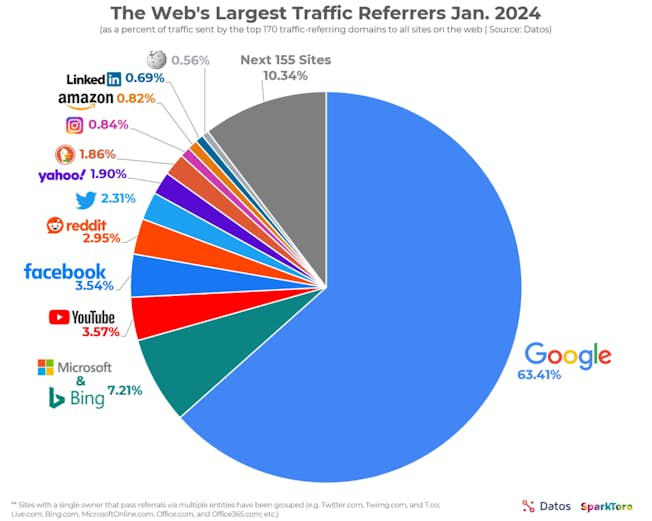
Khi nhìn vào các nguồn Referral Traffic, chúng ta thấy Google chiếm ưu thế tuyệt đối với 63% tổng số lượt giới thiệu, và khi cộng thêm Microsoft và Bing, các Search Engines chiếm đến 70% tổng lưu lượng referral. Tuy nhiên, gần một nửa số traffic này lại chỉ tập trung vào 100-200 domain hàng đầu, dẫn đến việc các doanh nghiệp vừa và nhỏ (SMBs) gặp khó khăn trong việc thu hút lưu lượng truy cập và duy trì sự hiện diện trực tuyến.
Điều đáng chú ý là referral traffic không phản ánh đầy đủ tầm ảnh hưởng của các nền tảng đối với hành vi người dùng. Mặc dù search traffic chiếm 70% lượng referrals, nhưng nó chỉ chiếm 10% tổng thời gian trực tuyến của người dùng. Phần lớn thời gian trực tuyến được dành cho các productivity tools, mạng xã hội, nền tảng video và audio, Gaming, và News Sites. Sự khác biệt này cho thấy nếu chỉ tập trung vào tối ưu hóa search traffic, các Marketer có thể bỏ lỡ cơ hội khai thác những nền tảng ảnh hưởng khác - nơi mà người dùng thực sự “tiêu thụ content”, tương tác và đưa ra các quyết định.
Những điểm chính rút ra:
-
Tập trung hoàn toàn vào việc thu hút traffic (traffic acquisition) đang khiến nhiều doanh nghiệp bị giới hạn bởi kênh tìm kiếm (search), bỏ qua các cơ hội tiếp cận trên những nền tảng khác.
-
Nỗ lực đo lường traffic referral thông qua các chuỗi liên kết (referral strings) có thể khiến bạn bị Google thao túng và đánh giá sai hiệu quả của các kênh khác, dẫn đến việc phân bổ ngân sách không hiệu quả.
-
Để tối ưu hóa chiến lược trên mạng xã hội, doanh nghiệp cần chấp nhận nội dung zero-click — tập trung vào tương tác tại chỗ thay vì chỉ hướng người dùng ra ngoài.
-
Ưu tiên các nền tảng dựa trên hành vi của khách hàng mục tiêu: Phân tích và theo dõi customer behavior trên từng nền tảng để xác định kênh nào phù hợp với chiến lược tiếp thị và tối ưu hiệu quả phân bổ nguồn lực.
Email: Kênh Marketing Trường Tồn và Hiệu Quả
Trong khi nhiều kênh Marketing truyền thống như in ấn, truyền hình, và thậm chí các nền tảng mạng xã hội đang dần mất đi sức hút, email vẫn giữ vững vị thế là một kênh Marketing ổn định và hiệu quả. Thống kê từ năm 2005 cho thấy tỷ lệ mở và tỷ lệ nhấp chuột (Open Rate và Click-Through Rate) của email gần như không thay đổi, chứng minh sức sống bền bỉ và hiệu suất cao của kênh này.
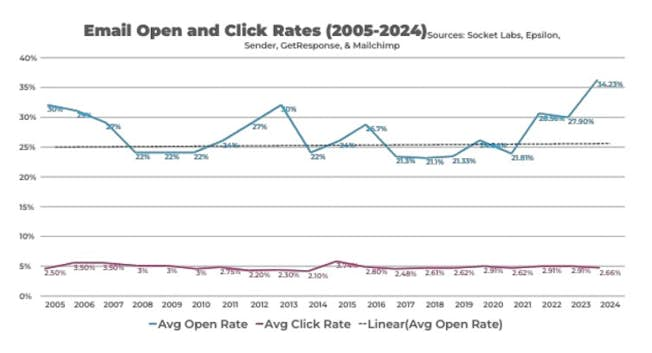
Sự ổn định đã giúp email trở thành công cụ chủ lực trong việc xây dựng và duy trì quan hệ với khách hàng trong dài hạn. Mặc dù có quan điểm cho rằng thế hệ trẻ ít sử dụng email, nhưng dữ liệu thực tế chỉ ra rằng khi họ bắt đầu đi làm, tần suất tương tác của họ với email cũng tương tự như các thế hệ trước.
Ngược lại, các nền tảng mạng xã hội như TikTok lại thường xuyên thay đổi thuật toán và chính sách, gây khó khăn cho các chiến dịch Marketing và làm giảm độ ổn định. Ví dụ, X (trước đây là Twitter) đã mất đi nhiều giá trị thương mại, trong khi Facebook cũng đã giới hạn mạnh mẽ khả năng tiếp cận tự nhiên (organic reach), khiến doanh nghiệp gặp khó khăn trong việc tiếp cận người dùng mà không cần quảng cáo trả phí.
Với những ưu điểm vượt trội của email, các doanh nghiệp nên xem xét đầu tư vào xây dựng và phát triển danh sách email của mình. Các chiến lược như mua lại doanh nghiệp để sở hữu danh sách email có sẵn hoặc hợp tác với các đơn vị có tệp khách hàng chất lượng là những phương án đáng cân nhắc để nhanh chóng mở rộng cơ sở dữ liệu.
Như Rand Fishkin đã nhấn mạnh:"Email là kênh tốt nhất nếu bạn muốn sở hữu đối tượng của riêng mình và có thể ảnh hưởng đến họ một cách nhất quán."
Những điểm chính rút ra:
- Ưu tiên email: Email nên được xem là kênh Marketing chủ đạo trong mọi chiến lược của doanh nghiệp nhờ tính ổn định và hiệu quả lâu dài.
- Đánh giá rủi ro: Khi đầu tư vào các kênh khác như mạng xã hội, doanh nghiệp cần cân nhắc kỹ về các rủi ro tiềm ẩn do sự biến động về thuật toán và khả năng tiếp cận.
- Mua lại danh sách email: Đây là một chiến lược tăng trưởng nhanh giúp doanh nghiệp mở rộng cơ sở dữ liệu khách hàng mà không cần mất nhiều thời gian xây dựng từ đầu.
- Đa dạng hóa kênh: Bên cạnh việc sử dụng email làm kênh chủ lực, doanh nghiệp cũng nên khai thác thêm các nền tảng khác như YouTube và Reddit để mở rộng phạm vi tiếp cận và tiếp cận đối tượng khách hàng mục tiêu trên nhiều kênh khác nhau.
Các kênh khác để cân nhắc
Nếu bạn đang gặp khó khăn trong việc tiếp cận đối tượng mục tiêu qua Google Search và chưa có một website đủ uy tín, hãy xem xét khai thác tiềm năng của các nền tảng mạng xã hội để tăng độ nhận diện thương hiệu và xây dựng cộng đồng.- YouTube, Reddit và các diễn đàn chuyên ngành: Đây là những nền tảng lý tưởng để bắt đầu xây dựng cộng đồng và nâng cao nhận diện thương hiệu. Đặc biệt, Reddit rất hiệu quả trong việc tiếp cận các ngách người dùng có sở thích đặc biệt, chẳng hạn như các nhà thiết kế đồ họa hoặc người đam mê công nghệ. Các nền tảng như Pinterest, Behance, và LinkedIn cũng là lựa chọn tốt để kết nối với các chuyên gia trong lĩnh vực sáng tạo và tăng cường sự hiện diện của thương hiệu trong các cộng đồng chuyên môn.
- Threads - Cơ hội mới cho các nhà Marketing: Nếu bạn đã từng sử dụng Twitter để quảng bá sản phẩm/dịch vụ, thì Threads có thể là một lựa chọn thay thế tiềm năng. Đây là nền tảng đang phát triển nhanh chóng và còn nhiều dư địa để khai thác. Việc tham gia sớm sẽ giúp bạn tận dụng tối đa các lợi ích ban đầu như thuật toán đề xuất và khả năng tiếp cận người dùng mới một cách hiệu quả.
|
Học Chương trình DMI PRO để đạt Chứng chỉ CDMP, chiếc vé thông hành để chinh phục đỉnh cao nghề nghiệp Digital Marketing trên toàn thế giới.  |
TIN CÙNG CHỦ ĐỀ
-
 Ai nên học DMI PRO? Marketer, chủ doanh nghiệp hay người mới?
Ai nên học DMI PRO? Marketer, chủ doanh nghiệp hay người mới?
-
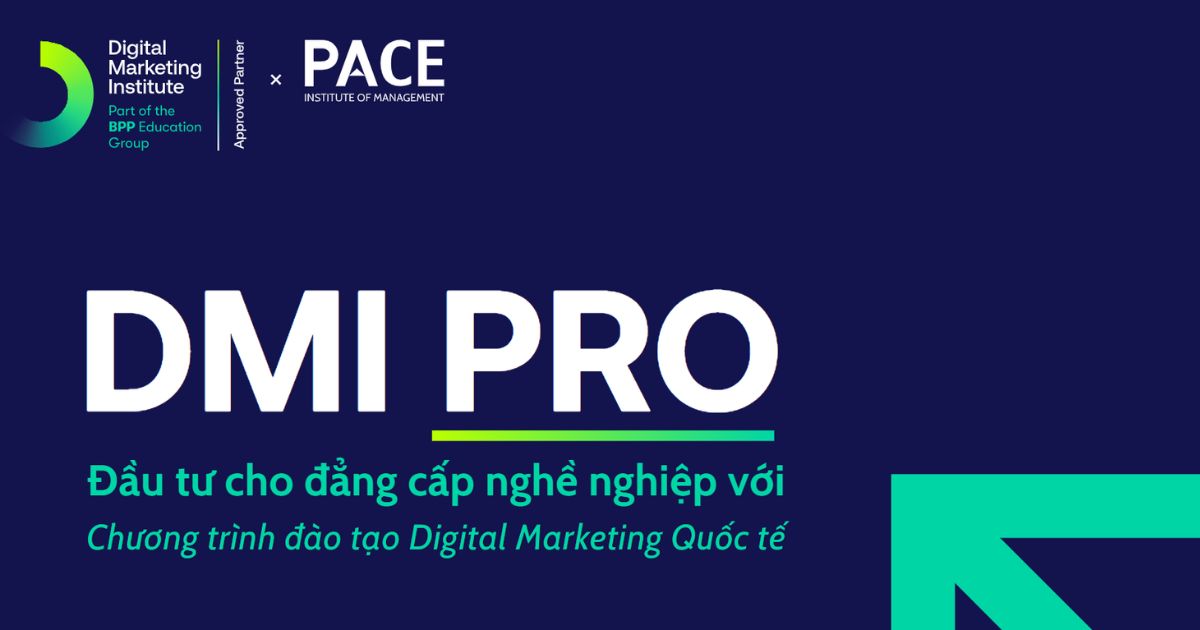 Điểm khác biệt nổi bật của chương trình DMI PRO
Điểm khác biệt nổi bật của chương trình DMI PRO
-
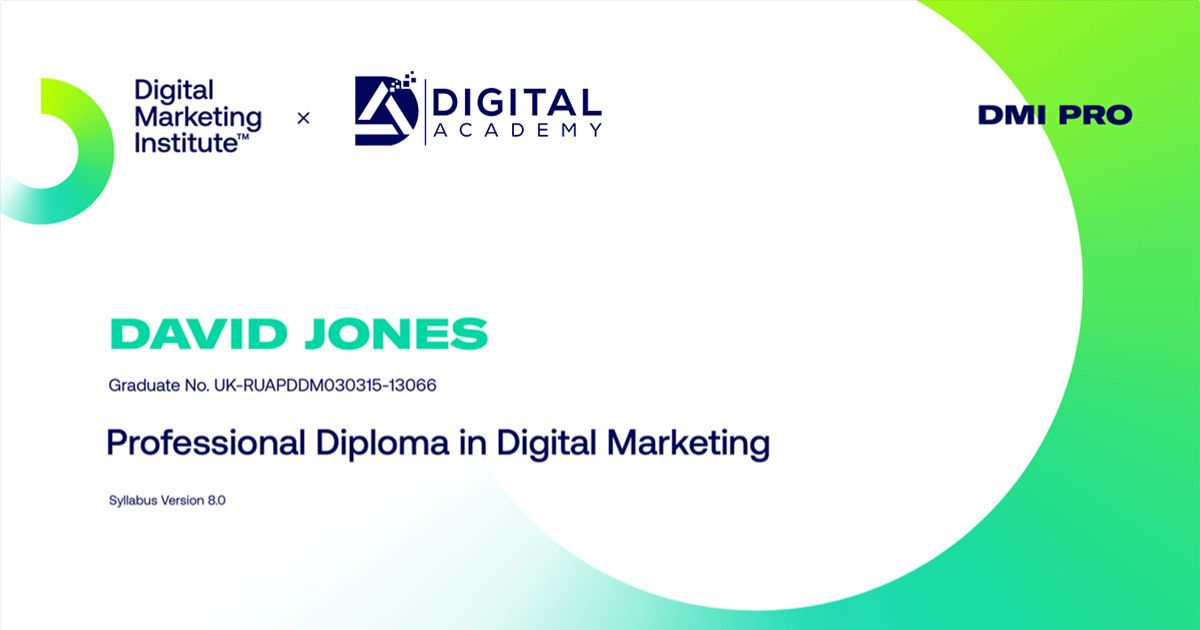 Vươn tầm thế giới với Chứng chỉ Digital Marketing Quốc tế
Vươn tầm thế giới với Chứng chỉ Digital Marketing Quốc tế
-
 Tổng hợp các công ty tư vấn chiến lược và quản trị doanh nghiệp ở Việt Nam
Tổng hợp các công ty tư vấn chiến lược và quản trị doanh nghiệp ở Việt Nam
-
 Danh sách các công ty đào tạo doanh nghiệp chất lượng tại Việt Nam
Danh sách các công ty đào tạo doanh nghiệp chất lượng tại Việt Nam
Và chúng tôi sẽ hỗ trợ bạn trên hành trình đó.

MARKETER NGƯỜI VIỆT ĐẦU TIÊN
TRỞ THÀNH DIGITAL MARKETER QUỐC TẾ & THAM GIA CỘNG ĐỒNG DIGITAL MARKETER TOÀN CẦU!



